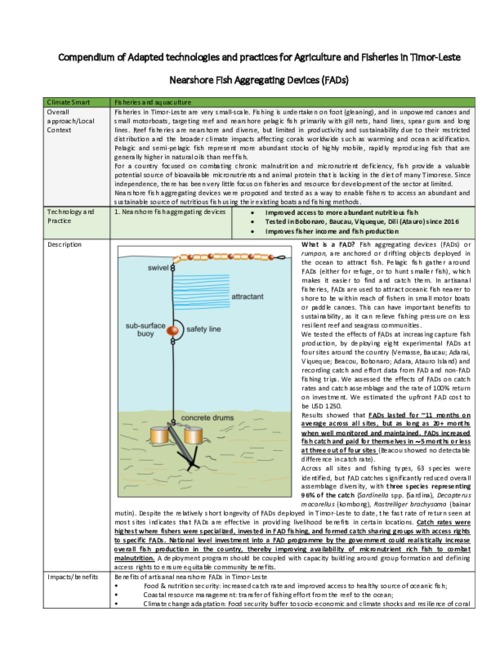Adapted technologies and Practices for Agriculture and Fisheries in Timor-Leste: Nearshore Fish Aggregating Devices

Fisheries in Timor-Leste are very small-scale. Fishing is undertaken on foot (gleaning), and in unpowered canoes and small motorboats, targeting reef and nearshore pelagic fish primarily with gill nets, hand lines, spear guns and long lines. Reef fisheries are nearshore and diverse, but limited in productivity and sustainability due to their restricted distribution and the broader climate impacts affecting corals worldwide such as warming and ocean acidification. Pelagic and semi-pelagic fish represent more abundant stocks of highly mobile, rapidly reproducing fish that are generally higher in natural oils than reef fish. For a country focused on combating chronic malnutrition and micronutrient deficiency, fish provide a valuable potential source of bioavailable micronutrients and animal protein that is lacking in the diet of many Timorese. Since independence, there has been very little focus on fisheries and resource for development of the sector at limited. Nearshore fish aggregating devices were proposed and tested as a way to enable fishers to access an abundant and sustainable source of nutritious fish using their existing boats and fishing methods.
Permalink
Date Available
Type
Publisher
Countries
Copyright
CC-BY-NC-ND-4.0
Research Themes
Language